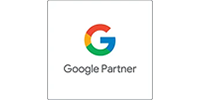Cost Per Opportunity: The Business Leader’s Mandatory Metric
The modern business leader is empowered with more data, and in more ways than ever before. With the impending data overload, it can be difficult to discern which KPIs are most important for your sales and marketing program. Sure, they all provide some insight, but when push comes to shove, which KPI provides the clearest view into your sales and marketing performance and serves as an effective gauge of demand? The answer is Cost per opportunity (CPO). Here’s why CPO is one of the most important KPIs for any business leader.
There are two key parts to making a sale and they can often be related to the ancient idiom: You can lead a horse to water, but you can’t make it drink. However, in order to close a deal, you need the horse to drink.
- Leading a horse to water - this is your lead generation and prospecting program (Marketing)
- Getting it to drink - this is actually getting prospects to buy your product. (Sales)
While these two actions are often entrenched within separate sales and marketing silos of an organization, it is absolutely vital to integrate them in order to drive a desirable CPO.
Don’t Wait to Identify & Reach Your Target CPO
Leading the Horse to Water
The “leading a horse to water” bit refers to your top of the funnel (TOFU) sales and marketing activities - the lead generation, the prospecting (which is actually primarily a marketing function), the content marketing, etc. Every action and activity aimed toward getting the visitor to your website and into a conversion pathway is an act of “getting the horse to water.” Additionally, this often leads to one of the most contentious discussions between marketing and sales - marketing is generating leads at an efficient rate and cost per lead (CPL), but sales isn’t converting those leads to opportunities at a desirable rate or cost. Having marketing adopt CPO goals and metrics is one way to strengthen the tie between sales and marketing.
Getting the Horse to Drink
Leading the horse to water is only half of the CPO battle, as making it drink is the ultimate goal. Guiding your marketing qualified leads into real sales opportunities (qualified to close) happens when:
- You target the right people.
- Your value proposition resonates with this group.
- These people are planning to buy in a reasonable timeframe.
Now, let’s take this one step further: What impacts those opportunities closing?
- The price is right.
- The offering is relevant.
- The product works.
The great thing about CPO is that it indicates demand; if your CPO is low and your close rate is high, you know that people want your product – and you’re selling it right. In essence, CPO decouples sales into demand and the close rate converts opportunities into cash.
This KPI also allows management to see the whole picture in terms of their sales process, and helps to identify where the biggest gaps are. When talking sales and marketing ROI, people tend to focus on the ROI of the CAC and overlook the CPO. Focusing solely on CPL and CAC does not paint the entire picture, and you may not be able to decipher whether your gaps lie in demand or in closing.
CPO and Your Company
A low CPO indicates that both marketing and sales are “doing their jobs.” It means that marketing is generating the right type of leads and at the right cost, and that sales reps are efficiently moving leads into the opportunity pipeline. For hiring or firing decisions, this insight is extremely important. Without a clear view of CPO, management lacks visibility of what is broken in the process and will never be able to develop a truly scalable demand generation program. Once you nail down your desirable metrics CPO it’s important to continuously monitor and improve. Incorporate a macro or global CPO metric into your daily tracking, but also dissect it into more micro-metrics to understand CPO by region, source, rep, and product.
Now that you better understand how to track and optimize your CPO, are you ready to take your sales to the next level? Download our free eBook to discover how to take your sales program from 0 to 60 in no time, or request a free consultation to learn how outsourcing sales and marketing can result in a desirable CPO.











